A very light art

A very light art, Ca’ Rezzonico, Venezia
From 1 June 2013 to 24 November 2013
Venice
Place: Ca’ Rezzonico, Museo del Settecento veneziano
Address: Dorsoduro 3136
Times: Until October 31st, 10am-6pm (ticket office 10am-5pm); from November 1st, 10am-5pm (ticket office 10am-4pm); closed on Tuesdays
Responsibles: Cornelia Lauf
Ticket price: full price € 8, reduced € 5,50
Telefono per informazioni: +39 041 2410100
E-Mail info: info@fmcvenezia.it
Official site: http://carezzonico.visitmuve.it
A Very Light Art is an exhibition about the interface between art and the everyday objects. It is a reflection about design, and a study of the historic role of artists in relation to the built environment. The exhibition is located in the historic environs of the Ca’ Rezzonico,museum of 18th century Venice and showcases the work of artists who master space and material in relation to context.
Dangling, hanging, lighting – the contributions of seven artists are neither adornment nor addition to their stately context, but function in seamless continuation of ancient duties. The unique aspect of all the works selected – lighting structures and mobiles – is their emphasis on craftsmanship and technical finesse, almost all of them the product of high Italian artistry.
Mario Airò has proposed a lighting fixture using neon, a desk he has designed for Adele-C, in Milan, and a standing flower vase created with one of the finest coppersmiths in Italy, Luigi Barato. Each object reveals its usefulness, yet can stand alone as a sculpture.
Stefano Arienti has proposed a small forest of trees composed of branches, with votive candles hanging from them. These are installed in one of the regal drawing rooms of the Ca’ Rezzonico, as lamp fixtures, in deliberate contrast to the noble palazzo.
Flavio Favelli is known for his magical transformations of mundane household objects, and their recomposition into sculptures of majesty and poetry. Gilded frames carrying velvet curtains, regal mirrors with surfaces washed away, or recomposed chandeliers turned from elements that are kitsch, into objects of beauty and grandeur. A major chandelier named Violet Murano is installed at the Grand Canal entrance of the Museo Ca’ Rezzonico.
Luigi Ontani, grand master of the italian art scene, offers his signature inversion of names and myths, in a series of works that seem contrived specifically for the Ca’ Rezzonico, but in fact, predate the exhibition. Ontani’s principle work is the chandelier Mayadusa, his first such glass lamp, realized in 1988 with the glassblower Maestro Silvano Signoretto. In the same room, will be exhibited Nel Regno del Ragno Eggoista, a large mirror depicting a spider weaving its web, and the vase Vanitaso, both accompanied by preparatory watercolors.
Gabriel Orozco is featured in the selection of two marvelous mobiles, enormous and ultra-light contraptions fabricated from hundreds of feathers. One mobile is in white feathers, the other, a cloud of light brown. His easy play nonethleless stems from a deep knowledge of sculpture and materials, as well as predecessors from Calder to Mirò.
Cerith Wyn Evans has elected to rewire the famous Ca’ Rezzonico chandelier, a marvelous work of art fabricated in the second half of the XVIII century. The chandelier, structured in the form of a “pagoda” in white glass with polychromy ornamento, was conceived and produced by Giuseppe Briati in Murano. Evans has often used readymade lighting fixtures, and here too utilizes a suite of music known for its elegiac qualities, and placing under it one glass chrysanthemum produced especially for the occasion of the exhibition. The chandelier is meant to flicker to the tune of the music. A subtle and poetic “détournement” of history, capturing the melancholy that is unique to Venice.
Heimo Zobernig agreed to create a specially produced light object, a lamp that does not shed light so much as attract attention for its rare beauty. It is an object that is the largest glass size that can be blown in Murano, and has been produced in ruby red spheres, in a little edition.
Dangling, hanging, lighting – the contributions of seven artists are neither adornment nor addition to their stately context, but function in seamless continuation of ancient duties. The unique aspect of all the works selected – lighting structures and mobiles – is their emphasis on craftsmanship and technical finesse, almost all of them the product of high Italian artistry.
Mario Airò has proposed a lighting fixture using neon, a desk he has designed for Adele-C, in Milan, and a standing flower vase created with one of the finest coppersmiths in Italy, Luigi Barato. Each object reveals its usefulness, yet can stand alone as a sculpture.
Stefano Arienti has proposed a small forest of trees composed of branches, with votive candles hanging from them. These are installed in one of the regal drawing rooms of the Ca’ Rezzonico, as lamp fixtures, in deliberate contrast to the noble palazzo.
Flavio Favelli is known for his magical transformations of mundane household objects, and their recomposition into sculptures of majesty and poetry. Gilded frames carrying velvet curtains, regal mirrors with surfaces washed away, or recomposed chandeliers turned from elements that are kitsch, into objects of beauty and grandeur. A major chandelier named Violet Murano is installed at the Grand Canal entrance of the Museo Ca’ Rezzonico.
Luigi Ontani, grand master of the italian art scene, offers his signature inversion of names and myths, in a series of works that seem contrived specifically for the Ca’ Rezzonico, but in fact, predate the exhibition. Ontani’s principle work is the chandelier Mayadusa, his first such glass lamp, realized in 1988 with the glassblower Maestro Silvano Signoretto. In the same room, will be exhibited Nel Regno del Ragno Eggoista, a large mirror depicting a spider weaving its web, and the vase Vanitaso, both accompanied by preparatory watercolors.
Gabriel Orozco is featured in the selection of two marvelous mobiles, enormous and ultra-light contraptions fabricated from hundreds of feathers. One mobile is in white feathers, the other, a cloud of light brown. His easy play nonethleless stems from a deep knowledge of sculpture and materials, as well as predecessors from Calder to Mirò.
Cerith Wyn Evans has elected to rewire the famous Ca’ Rezzonico chandelier, a marvelous work of art fabricated in the second half of the XVIII century. The chandelier, structured in the form of a “pagoda” in white glass with polychromy ornamento, was conceived and produced by Giuseppe Briati in Murano. Evans has often used readymade lighting fixtures, and here too utilizes a suite of music known for its elegiac qualities, and placing under it one glass chrysanthemum produced especially for the occasion of the exhibition. The chandelier is meant to flicker to the tune of the music. A subtle and poetic “détournement” of history, capturing the melancholy that is unique to Venice.
Heimo Zobernig agreed to create a specially produced light object, a lamp that does not shed light so much as attract attention for its rare beauty. It is an object that is the largest glass size that can be blown in Murano, and has been produced in ruby red spheres, in a little edition.
SCARICA IL COMUNICATO IN PDF
stefano arienti
·
luigi ontani
·
flavio favelli
·
gabriel orozco
·
venice
·
cerith wyn evans
·
heimo zobernig
·
ca rezzonico
·
COMMENTI

-
 Dal 17 July 2025 al 2 November 2025
Cortona | Sedi varie
Dal 17 July 2025 al 2 November 2025
Cortona | Sedi varie
-
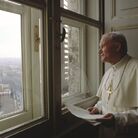 Dal 17 July 2025 al 30 November 2025
Roma | Museo Nazionale di Castel Sant’Angelo
Dal 17 July 2025 al 30 November 2025
Roma | Museo Nazionale di Castel Sant’Angelo
-
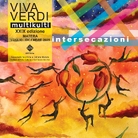 Dal 15 July 2025 al 19 December 2025
Matera | Sedi varie
Dal 15 July 2025 al 19 December 2025
Matera | Sedi varie
-
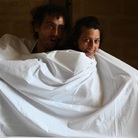 Dal 15 July 2025 al 21 July 2025
Matera | Fondazione Le Monacelle
Dal 15 July 2025 al 21 July 2025
Matera | Fondazione Le Monacelle
-
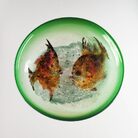 Dal 12 July 2025 al 24 November 2025
Venezia | Museo del Vetro
Dal 12 July 2025 al 24 November 2025
Venezia | Museo del Vetro
-
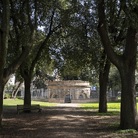 Dal 11 July 2025 al 21 September 2025
Roma | Loggia dei Vini - Villa Borghese
Dal 11 July 2025 al 21 September 2025
Roma | Loggia dei Vini - Villa Borghese


